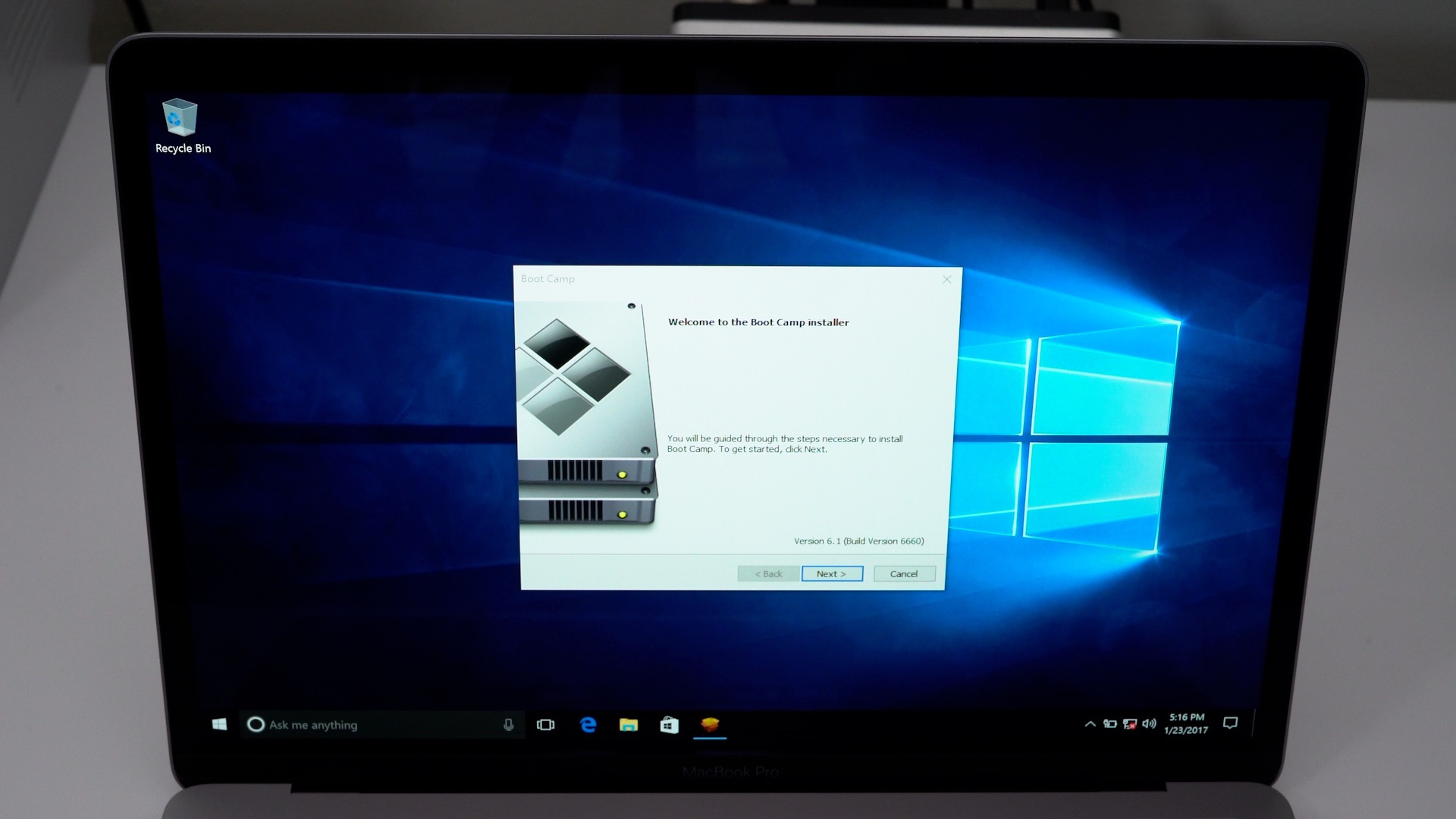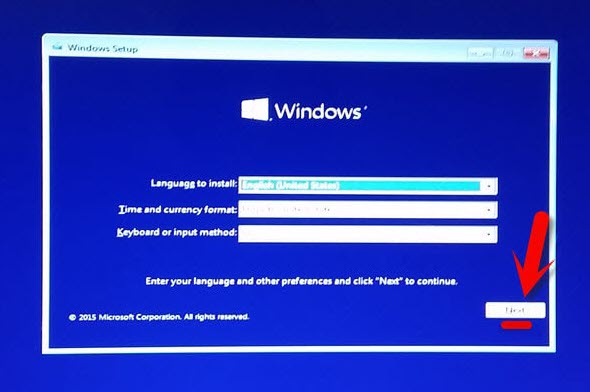Microsoft’s Windows holds around 77% of the global desktop market share, with just shy of two-thirds of that being made up by Windows 10. If you throw in laptops, Windows 10 controls. For more information about using Windows on your Mac, open Boot Camp Assistant and click the Open Boot Camp Help button. If you're using an iMac (Retina 5K, 27-inch, Late 2014) or iMac (27-inch, Late 2013) or iMac (27-inch, Late 2012) with a 3TB hard drive and macOS Mojave or later, learn about an alert you might see during installation.
(There's no video for QEMU for Windows - PPC emulator, runs Mac OS 9.1, 9.2 + OSX 10.0 to 10.5 yet. Please contribute to MR and add a video now!)
What is QEMU for Windows - PPC emulator, runs Mac OS 9.1, 9.2 + OSX 10.0 to 10.5? QEMU is a very versatile and extremely broadly supported open source virtual machine emulator. In 2016, QEMU could finally achieve what has never been possible before: emulating Mac OS 9.0.4, 9.1 and 9.2.2 (albeit still it's quite slow and the sound support is kind of buggy at the moment). Note that QEMU can also emulate Mac OS X 10.0 up to 10.5. At some point in the near future hopefully, QEMU will fully replace SheepShaver, but at the moment, SheepShaver still runs faster in most situations. Advantages of using QEMU vs SheepShaver:
These bundles were put together by 'that-ben' and are intended to be the easiest possible for beginners. Just launch the 'QEMU - Mac OS 9.2.2.bat' (or 'QEMU - Mac OS X Tiger 10.4.11.bat') file and wait 30 seconds for Mac OS to boot up. Nevermind the yellow screen with a VRAM partition not found error, it will go past this without any problem. The Mac OS 9 package contains a 1GB disk image on which Mac OS 9.2.2 is already fully installed. The Mac OS X package contains Mac OS X 10.4.11. BTW, if you need a larger disk image, you can grab one instantly from here: Blank hard drive disk images (3GB HFS up to 30GB HFS+) Networking is fully functional thanks to the sungem driver that's already pre-configured in these downloads. Right out of the box, it will network through your host machine but on its own subnet branch. The virtual machine's IP will be like 10.0.x.x. Your Windows host IP would likely be something like 192.168.x.x but what's nice is that the virtual machine can still tunnel back to your host machine's subnet branch. So, for instance, you could perfectly well make a server/client environment between Mac OS 9 in QEMU and your Windows host machine. Pre-installed software in the Mac OS 9.2.2 package includes:
Pre-installed software in the Mac OS X 10.4.11 package includes:
See also:Basilisk II - a 68K emulator with floppy support Qemu_(20171224)_-_PPC_-_Mac_OS_X_10.4.11.rar(1197.59 MiB / 1255.76 MB) QEMU (2017/12/15 build) for Windows w/ Mac OS X 10.4.11 pre-installed, RAR'ed / RAR archive 239 / 2018-01-28 / 63bc2a712f342b55ae25eb4397e1f3ad097e71be / / Qemu (20200820) - PPC - Mac OS 9.2.2.rar(147.3 MiB / 154.45 MB) QEMU (2020/08/20 build) for Windows w/ Mac OS 9.2.2 pre-installed / RAR archive 393 / 2020-09-18 / 2021-03-03 / e6da4bca95065b84742d67038bd6c1ab17c00bc4 / / Qemu (20190212) - PPC - Mac OS 9.2.2.rar(125.04 MiB / 131.11 MB) QEMU (2019/02/12 build) for Windows w/ Mac OS 9.2.2 pre-installed / RAR archive 1575 / 2019-03-19 / 16daa6ef096db9391dd15e8a486e6c2648011b22 / / Architecture
This program is for Windows. USEFUL TIPS WHEN USING QEMU:
|
What you need to install Windows 10 on Mac
- MacBook introduced in 2015 or later
- MacBook Air introduced in 2012 or later
- MacBook Pro introduced in 2012 or later
- Mac mini introduced in 2012 or later
- iMac introduced in 2012 or later1
- iMac Pro (all models)
- Mac Pro introduced in 2013 or later
The latest macOS updates, which can include updates to Boot Camp Assistant. You will use Boot Camp Assistant to install Windows 10.
64GB or more free storage space on your Mac startup disk:
- Your Mac can have as little as 64GB of free storage space, but at least 128GB of free storage space provides the best experience. Automatic Windows updates require that much space or more.
- If you have an iMac Pro or Mac Pro with 128GB of memory (RAM) or more, your startup disk needs at least as much free storage space as your Mac has memory.2
An external USB flash drive with a storage capacity of 16GB or more, unless you're using a Mac that doesn't need a flash drive to install Windows.
A 64-bit version of Windows 10 Home or Windows 10 Pro on a disk image (ISO) or other installation media. If installing Windows on your Mac for the first time, this must be a full version of Windows, not an upgrade.
- If your copy of Windows came on a USB flash drive, or you have a Windows product key and no installation disc, download a Windows 10 disk image from Microsoft.
- If your copy of Windows came on a DVD, you might need to create a disk image of that DVD.
Mac Os Bootcamp Windows 10 Iso
How to install Windows 10 on Mac
To install Windows, use Boot Camp Assistant, which is included with your Mac.
1. Check your Secure Boot setting
Learn how to check your Secure Boot setting. The default Secure Boot setting is Full Security. If you changed it to No Security, change it back to Full Security before installing Windows. After installing Windows, you can use any Secure Boot setting without affecting your ability to start up from Windows.
2. Use Boot Camp Assistant to create a Windows partition

Open Boot Camp Assistant, which is in the Utilities folder of your Applications folder. Follow the onscreen instructions.
Mac Os 10.13 Bootcamp Windows 10
- If you're asked to insert a USB drive, plug your USB flash drive into your Mac. Boot Camp Assistant will use it to create a bootable USB drive for Windows installation.
- When Boot Camp Assistant asks you to set the size of the Windows partition, remember the minimum storage-space requirements in the previous section. Set a partition size that meets your needs, because you can't change its size later.
3. Format the Windows (BOOTCAMP) partition
When Boot Camp Assistant finishes, your Mac restarts to the Windows installer. If the installer asks where to install Windows, select the BOOTCAMP partition and click Format. In most cases, the installer selects and formats the BOOTCAMP partition automatically.
4. Install Windows
Unplug any external devices that aren't necessary during installation. Then click Next and follow the onscreen instructions to begin installing Windows.
5. Use the Boot Camp installer in Windows
After Windows installation completes, your Mac starts up in Windows and opens a ”Welcome to the Boot Camp installer” window. Follow the onscreen instructions to install Boot Camp and Windows support software (drivers). You will be asked to restart when done.
- If the Boot Camp installer never opens, open the Boot Camp installer manually and use it to complete Boot Camp installation.
- If you have an external display connected to a Thunderbolt 3 port on your Mac, the display will be blank (black, gray, or blue) for up to 2 minutes during installation.
How to switch between Windows and macOS
Restart, then press and hold the Option (or Alt) ⌥ key during startup to switch between Windows and macOS.
Learn more
If you have one of these Intel-based Mac models using OS X El Capitan or later, you don't need a USB flash drive to install Windows:
- MacBook introduced in 2015 or later
- MacBook Air introduced in 2017 or later3
- MacBook Pro introduced in 2015 or later3
- iMac introduced in 2015 or later
- iMac Pro (all models)
- Mac Pro introduced in late 2013 or later
To remove Windows from your Mac, use Boot Camp Assistant, not any other utility.
Mac Os Bootcamp Windows 10 Pro
For more information about using Windows on your Mac, open Boot Camp Assistant and click the Open Boot Camp Help button.
1. If you're using an iMac (Retina 5K, 27-inch, Late 2014) or iMac (27-inch, Late 2013) or iMac (27-inch, Late 2012) with a 3TB hard drive and macOS Mojave or later, learn about an alert you might see during installation.


Mac Os Bootcamp Windows 10 64-bit

Mac Os Bootcamp Drivers Windows 10
2. For example, if your Mac has 128GB of memory, its startup disk must have at least 128GB of storage space available for Windows. To see how much memory your Mac has, choose Apple menu > About This Mac. To see how much storage space is available, click the Storage tab in the same window.
3. These Mac models were offered with 128GB hard drives as an option. Apple recommends 256GB or larger hard drives so that you can create a Boot Camp partition of at least 128GB.





